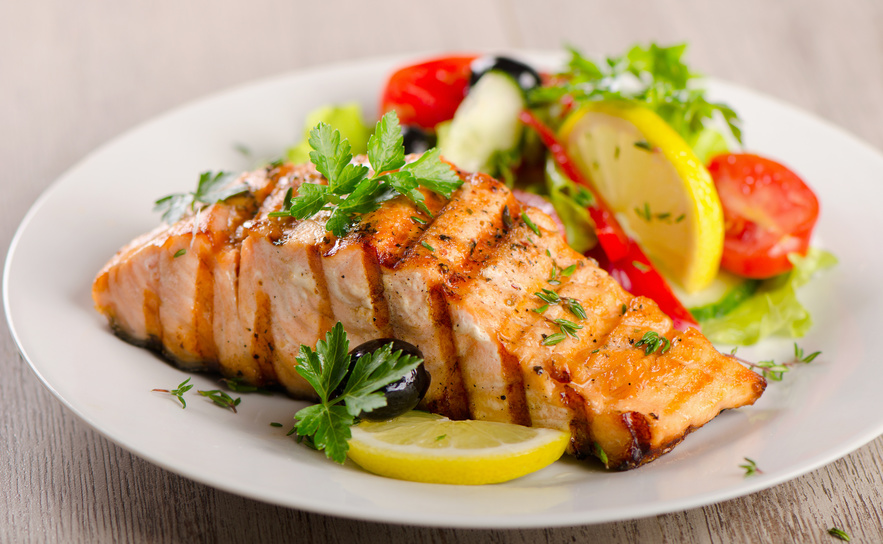Vitamin D plays an important role in bone health by helping our bodies absorb calcium and phosphorus, minerals that build strong teeth and help prevent osteoporosis. Its also necessary for a healthy immune system, and assists nerve and muscle function. Additionally, it may play a role in protecting against cancer, heart disease, stroke, diabetes and depression.
In the summer months when our bodies are exposed to the sun for 15-20 minute periods a few times a week, our skin is able to produce much of the vitamin D that we need. But, during the winter, it can be hard for our bodies to get their day in the sun. In colder climates, we spend our dark winter months in heavy coats, bundled up with gloves, hats and scarves, limiting our chance for sun exposure. At this time of year, its especially important to make sure you’re boosting your dietary vitamin D intake by consuming foods that contain vitamin D or are fortified with it.
Which foods contain the most vitamin D
- Fatty seafood. Salmon, mackerel, herring and sardines are some of the best food sources of vitamin D. These fish have the added benefit of being high in calcium and being good sources of omega-3 fatty acids, iron, and vitamin B12.
- Check out our 12 Great Ways to Use Canned Sardines resource for some easy inspiration.
- Try this Tomato Salad el Alfama with Mackerel or feast on some Crispy Salmon with Walnut Salsa Verde.
- Eggs. The yolk of an egg contains more than 10% of the daily recommended level of vitamin D
- For some fresh ideas for incorporating eggs into your meals, check out our helpful 12 Great Ways to Use Eggs resource.
- Take our Avocado Deviled Eggs to your next dinner party, cook up some easy Baked Eggs and Spinach, or indulge in our Oat and Amaranth-Crusted Ham and Cheese Quiche.
- Mushrooms. Some mushrooms, like chanterelles, maitakes, and morels naturally contain high levels of vitamin D. Look for crimini and portobello mushrooms that have been exposed to ultraviolet light, increasing their vitamin D level.
- Serve up some Portobello Mushrooms Stuffed with Wild Rice or fill your belly with warming Pasta & Mushroom Casserole.
- Fortified foods. Foods that have been fortified have had vitamins added during their processing. The Nutrition Facts Panel will tell you how much vitamin D these foods contain per serving. Look for these types of products:
- Fortified milk and dairy. Most milk and plant-based milk alternatives are fortified, along with some yogurts and cheeses.
- Fortified cereals. Most ready-to-eat cereals are fortified.
- Fortified orange juice. Most brands fortify their juice so that one 8-ounce serving has about 25% of your recommended daily intake of vitamin D.
Let us know the ways you keep your bones healthy and your immune system in tip top condition all winter long. Share your favorite recipes in the comments below.
Caroline Sluyter, Oldways Whole Grain Stamp program manager








Leave a comment